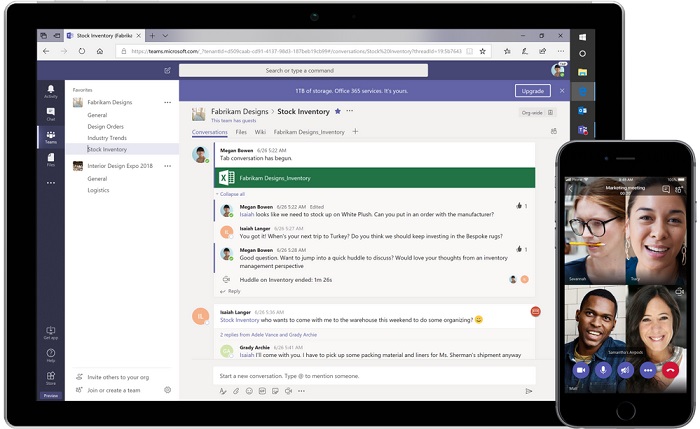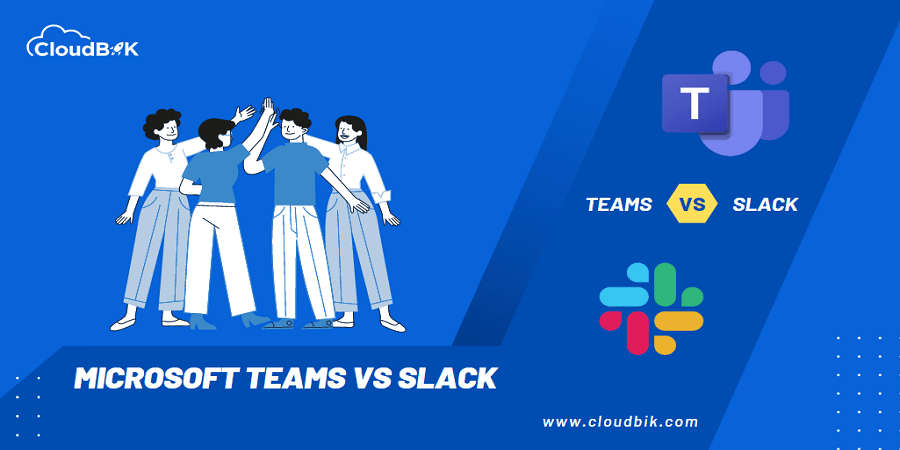This article compares Microsoft Slack vs Teams to help users choose the best collaboration tool depending on their needs. Slack and Microsoft Teams both are the most popular collaboration tools. Both offer a wide range of features that enable remote teams to stay connected and productive, but there are some key differences between Teams and Slack. In this blog post, we’ll take a look at how these two platforms compare when it comes to features, pricing models, user experience, and more.
Contents
Differences between Microsoft Teams and Slack: Slack vs Teams
Microsoft Teams and Slack are two of the most popular collaboration tools in today’s digital workplace. Both make communication and collaboration easier for teams, but which one has the better user experience? To answer this question, let’s look at some key differences between Microsoft Teams and Slack in terms of features, design, pricing, and user experience. Let’s compare teams and slack.
Features: Slack vs Teams
Slack was created as an instant messaging platform, with many different channels users can join to communicate with their team members in real-time. It also offers file-sharing capabilities so users can easily share documents or images without emailing them back and forth. Additionally, Slack has powerful search functions that make it easy for users to find past conversations quickly when needed.

Microsoft Teams takes collaboration a step further by providing an all-in-one workspace where teams can work together on projects from start to finish within one application – no need for multiple programs like Word or Excel anymore! It also integrates seamlessly with other Office 365 apps such as Outlook, Planner, etc., allowing everyone involved in a project to access all necessary information simultaneously instead of constantly switching between applications. Furthermore, its video conferencing feature makes it possible for remote workers around the globe to stay connected while working on projects together, even if they’re miles apart physically!

Design: Slack vs Teams
In terms of design, Microsoft Teams is aesthetically pleasing while maintaining an organized layout so you can easily find what you’re looking for quickly – something Slack lacks in comparison since its interface looks cluttered due to all the different options available within it. MS Team’s loading time is much faster than Slacks, allowing users to access their data quicker – meaning less wait time overall! Lastly, the MS team allows greater customization options when compared to slack giving the user more control over their workspace environment. This makes it easier for them to tailor fit settings according to specific needs rather than relying solely on preset ones offered by either platform.
Pricing Models: Slack vs Teams
Another important factor when comparing these two platforms is the pricing model. While both provide free plans with limited functionality, you must upgrade your plan accordingly if you want full access. MS Team’s enterprise plan is slightly more expensive than Slacks’ paid offering; however, if your organization already uses Office 365 subscription, then it is likely a cheaper godown route of using MS teams since all basic functionalities come included in the subscription itself rather than having extra purchase licenses separately.
User Experience: Slack vs Teams
Lastly, when talking about user experience – Both products have modern UI designs making them easy to use across different devices; however, they do differ slightly in terms of navigation structure & layout design; For example – In the case of slack, each conversation takes place within a dedicated channel whereas MS teams organize conversations into threads within same chat group allowing users easily track & follow discussions without getting lost amongst multitude messages from other channels.
Overall, both platforms have great potential, but from my perspective, I believe Microsoft teams have a superior User Experience because it not only does provide great functionality & aesthetics but also gives people extra flexibility & control over their workspaces – something slack can’t quite compete against yet!
So the above are some differences between Microsoft Teams and Slack.
All things considered
So which one should you choose? That depends primarily on your needs; if you’re looking mainly just communication, then Slack might be better suited, but if your team requires more robust collaborative tools, then go ahead with Microsoft Teams instead! Ultimately though, whichever tool works best will depend entirely upon how well integrated into existing systems/workflows it becomes – so do some research before making any decisions about what would best fit your team’s specific requirements.
Read more: Google Drive vs OneDrive Comparison



